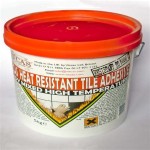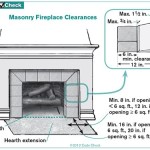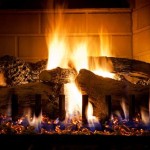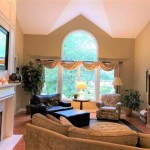Fireplace With Hearth Designs: A Comprehensive Guide
The fireplace has long been a central element in residential design, offering warmth, ambiance, and a focal point within a living space. Integral to the functionality and aesthetic appeal of a fireplace is the hearth. The hearth serves not only a practical purpose, protecting the surrounding flooring from heat and embers, but also contributes significantly to the overall design statement. Exploring various fireplace with hearth designs allows for a customized integration of this architectural feature into diverse interior styles.
The selection of a fireplace and hearth design involves careful consideration of factors such as the size and layout of the room, the architectural style of the home, the desired functionality, and personal preferences. The materials used, the dimensions of the hearth, and the fireplace surround all play critical roles in determining the overall look and feel of the installation. This article provides a comprehensive overview of fireplace with hearth designs, examining different styles, materials, and considerations for creating a cohesive and aesthetically pleasing focal point.
Understanding the Functionality of a Hearth
The primary function of a hearth is to provide a non-combustible surface in front of the fireplace opening. This is a crucial safety feature, preventing stray embers or sparks from igniting flammable materials such as carpets or wooden flooring. Building codes often specify minimum size requirements for hearths, based on the size of the fireplace opening. These codes ensure adequate protection from potential fire hazards. Beyond safety, the hearth also serves as a practical space for tending to the fire, providing a surface for placing tools, wood, or other accessories related to fireplace operation.
The construction of a hearth typically involves multiple layers of non-combustible materials. A common approach is to build a base layer of concrete or masonry, followed by a surface layer of materials such as stone, brick, tile, or concrete. The choice of surface material significantly impacts the aesthetic of the fireplace and should be selected to complement the surrounding décor. Furthermore, the hearth can be designed to be flush with the floor, raised above it, or even sunken, each configuration offering a distinct visual effect and functional advantage.
The thermal properties of the hearth material are also an important consideration. Materials with high thermal mass, such as stone and brick, can absorb and retain heat from the fireplace, radiating it back into the room even after the fire has died down. This can contribute to increased energy efficiency and a more consistent room temperature. Conversely, materials with lower thermal mass may be more suitable for decorative fireplaces that are not intended for frequent use.
Exploring Different Hearth Styles and Materials
The design possibilities for hearths are vast, ranging from traditional to contemporary styles, and employing a wide array of materials. The choice of style and material should align with the overall aesthetic of the room and the fireplace surround. A traditional hearth might feature natural stone, brick, or wood accents, while a contemporary hearth may incorporate sleek concrete, glass, or metal elements.
Traditional Hearth Styles:
Traditional hearth designs often evoke a sense of warmth and rustic charm. Materials such as fieldstone, river rock, and reclaimed brick are commonly used to create a natural and timeless look. These materials can be arranged in various patterns, such as herringbone or stacked bond, to add visual interest. The hearth may be raised to create a more prominent focal point, or it can be flush with the floor for a more integrated appearance. Wood mantels and surrounds are often paired with traditional hearths to complete the classic look.Contemporary Hearth Styles:
Contemporary hearth designs often prioritize clean lines, minimalist aesthetics, and modern materials. Concrete is a popular choice for contemporary hearths, offering a smooth, seamless surface that can be customized with various colors and textures. Glass and metal elements can also be incorporated to create a sleek and sophisticated look. Linear fireplaces, often paired with long, narrow hearths, are another hallmark of contemporary design. These fireplaces are designed to create a dramatic focal point without overwhelming the space.Materials for Hearth Construction:
As previously mentioned, the choice of materials for hearth construction significantly impacts both the functionality and aesthetics of the fireplace. Natural stone, such as granite, slate, and limestone, provides a durable and visually appealing surface. Brick is another classic choice, offering a rustic charm and excellent thermal properties. Tile, available in a wide range of colors, patterns, and sizes, provides versatility and can be used to create intricate designs. Concrete, either poured in place or precast, is a popular choice for contemporary hearths, offering a smooth, seamless surface that can be customized with various finishes. Each material offers its own unique characteristics and advantages, and the selection should be based on the desired aesthetic, budget, and functional requirements.Considerations for Integration and Design
The integration of the hearth with the surrounding décor is paramount to creating a cohesive and aesthetically pleasing fireplace design. The hearth should be considered as an integral part of the overall room design, rather than an isolated element. Factors such as the color scheme, furniture placement, and architectural style should all be taken into account when selecting and designing the hearth.
Scale and Proportion:
The size and proportion of the hearth should be appropriate for the size of the room and the scale of the fireplace. A hearth that is too small may appear insignificant, while a hearth that is too large may overwhelm the space. The dimensions of the hearth should be carefully considered to ensure that it is both functional and visually balanced. The height of the hearth can also impact the perceived size of the room. A raised hearth can create a more dramatic focal point and visually separate the fireplace from the rest of the room, while a flush hearth can create a more seamless and integrated appearance.Color and Texture:
The color and texture of the hearth material should complement the surrounding décor. Neutral colors, such as beige, gray, and white, are versatile and can be easily integrated into a variety of color schemes. Bold colors can be used to create a statement, but they should be carefully considered to ensure that they do not clash with the rest of the room. The texture of the hearth material can also add visual interest. Rough, textured materials, such as natural stone or brick, can create a rustic and inviting atmosphere, while smooth, polished materials, such as concrete or glass, can create a more modern and sophisticated look.Accessibility and Safety:
The design of the hearth should also consider accessibility and safety. The hearth should be easily accessible for tending to the fire and cleaning. Sharp edges or uneven surfaces should be avoided to prevent accidents. The hearth should also be designed to comply with all relevant building codes and safety regulations. This includes ensuring that the hearth is made of non-combustible materials and that it meets the minimum size requirements for the fireplace opening. Furthermore, consideration should be given to the placement of furniture and other items near the hearth to ensure that they are a safe distance from the heat and flames.Customization and Personalization:
While adhering to safety standards and design principles, there is ample opportunity to customize and personalize the hearth to reflect individual preferences and style. This can involve incorporating unique design elements, such as custom tile patterns, handcrafted stone details, or personalized engravings. The hearth can also be used to showcase personal collections or artwork. By adding personal touches, the hearth can become a truly unique and meaningful focal point in the home.In conclusion, the design of a fireplace with a hearth is a multifaceted process that requires careful consideration of functionality, aesthetics, and safety. By understanding the different styles, materials, and design principles involved, it is possible to create a fireplace that is both beautiful and functional, adding warmth, ambiance, and value to the home.
:strip_icc()/101901958-ca10f847d8b54a8d9bb2222d39cd960c.jpg?strip=all)
Best Fireplace Hearth Ideas And Designs Tips

Custom Built Fireplace Ideas For A Living Room Home Makeover Traditional Design

5 Fireplace Design Ideas That Will Enhance Your Home

Live Beautifully Before After A Beautiful Kitchen Home Fireplace Living Room

Fireplace Decor Hearth Design Tips

How To Choose The Right Fireplace Heart Design And Material Hearth Stone Remodel

40 Fabulous Fireplace Design Ideas For Any Budget Or Style

Diy Fireplace Makeover At Home With The Barkers

Red Hot Fireplace Ideas

Our Favorite Fireplace Design Ideas The Tile Blog
Related Posts








